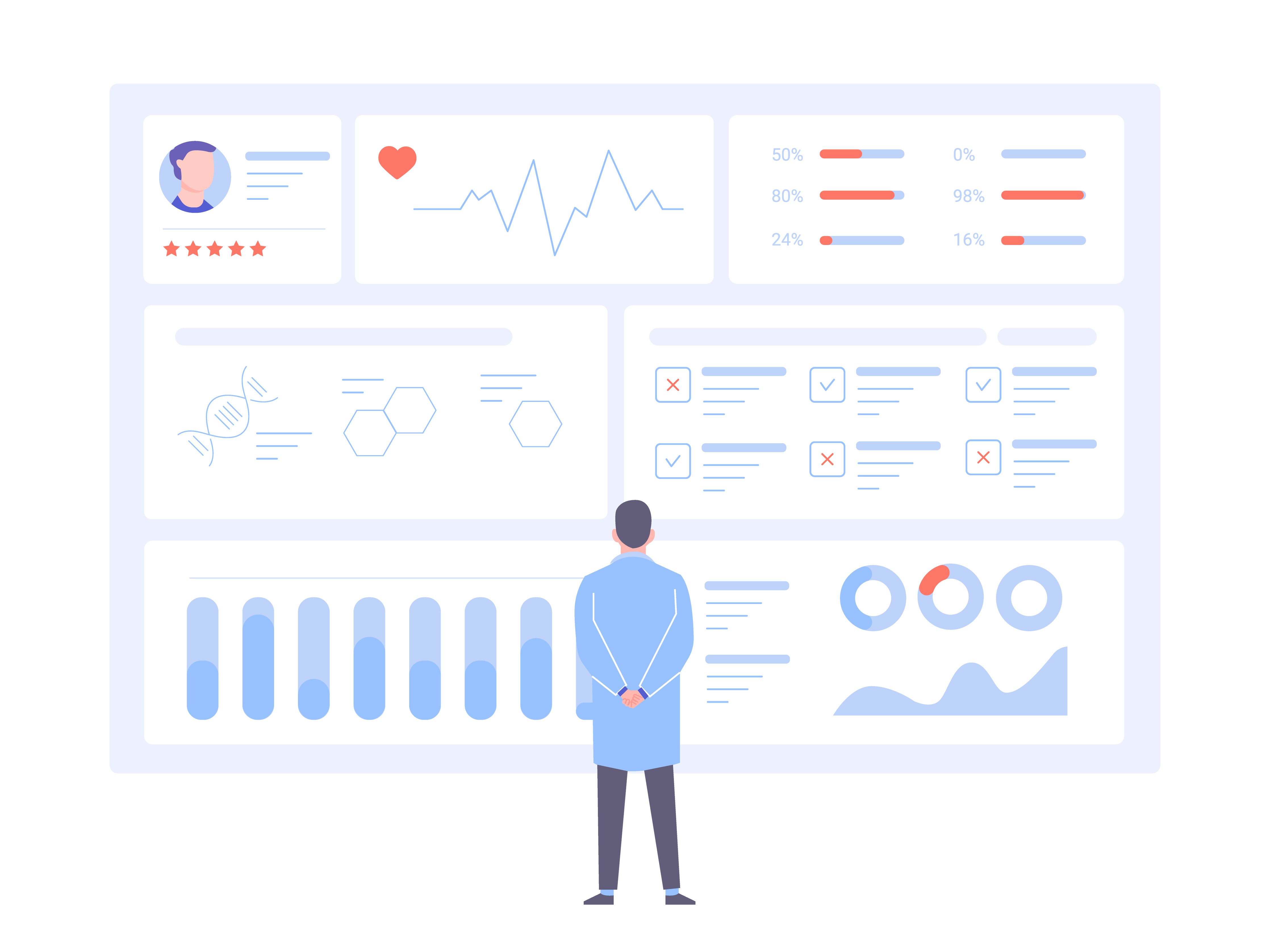Article
The Power of data and working together to solve health crisis
Author(s):
Healthcare professionals and policy makers must act, as we go from the crisis phase of the pandemic, to managing an ongoing public health risk.

“Everyone has a plan until they get punched in the mouth.” Mike Tyson’s famous quip aptly describes the United States’ public health system’s inherent collapsibility, particularly during a crisis. Our pandemic response highlighted the structural vulnerabilities we’ve been planning to reform for a long time. But when the real thing hit us, our system froze, confused, like an outmatched boxer taking a punch in the first round.
The time for planning has passed. Healthcare professionals and policy makers must act, as we go from the crisis phase of the pandemic, to managing an ongoing public health risk. We have a window to assess how our healthcare system responded to COVID-19 and put systems in place to better respond to the next crisis.
In talking with my colleagues, we’ve identified three key areas that we believe we can make a big impact:
- Addressing disparities in patient access to the best care and clinical trials.
- The use of predictive analytics to proactively monitor and identify trends in illness.
- Combining what we know about disparities in care and predictive analytics to drive better outcomes.
The good news? We have the tools to eliminate these overlapping failures. By leveraging existing data, our public health systems can perform targeted community outreach, forge cooperative connections, and improve predictive analytics models.
Two public health systems
When we talk about public health in America, we speak of a sharp divide between underserved groups and their better connected peers. COVID highlighted communities of color and poorer Americans experienced exponentially greater damage from the pandemic. Why? Vulnerable groups do not currently benefit from the advanced treatment options. My colleague Scott Morris, vice president of health sciences at Change Healthcare says: “Our ongoing challenge to connect underserved populations to clinical trials plays a bigger role than you may imagine. Absent outreach and access to care at the community level, significant barriers exist for many patients.” Less than 3% of patients participate in clinical trials due to lack of information among community providers, who treat the majority of patients in the US, particularly minorities and other underserved populations. The fact is that 85% of patientswho are potentially eligible for advanced treatment options through clinical trials are seen in community care settings (where research is not being conducted) and are never screened for a trial. During the recent pandemic, containing the virus’ spread required getting advanced treatment options to patients in disenfranchised groups.
How can we close this care gap? Our relationship with providers, medical groups and health systems-coupled with extensive access to EMRs, we are matching patients to trials in community settings. Delivering these rosters keeps clinical decisions in the hands of the treating physician by making it easy for providers to refer their patients to appropriate and accessible clinical trials.
Unleash the power of predictive analytics
In the pandemic, the cost of inadequate syndromic prediction, lack of preventative care and underuse of predictive analytics caused widespread failure. We have the data to solve that. Data can accurately inform pandemic and syndromic prediction, putting us a step ahead of impending outbreaks. It can improve preventative care, enabling data sharing at the community level so we can identify trends in real time and establish best practices. If we use imaging data to augment what radiologists can see, they can flag that one patient with a visibly normal mammogram who might be at greater risk for breast cancer. That patient might need a mammogram sooner than otherwise recommended. When we accurately monitor and identify trends in illness, information can be shared with community-based treatment centers, academic institutions and government agencies, who can then work as partners in prevention. As we build channels to get informatics data flowing, system functioning could run with unprecedented efficiency.
Effective use of SDoH: bringing it all together
For some time now, there has been a broad agreement that SDoH like economic stability, health literacy & race/ethnicity highly influence health outcomes. Why then aren’t there more results from SDoH programs? Tim Suther, senior vice president of data solutions sees the quality of clinical and informatics data, which inform SDoH determinations, as critical to good outcomes. “The fidelity of SDoH data and modernized systems for compliance, when in place, drive positive outcomes. Absent these, results will continue to be mixed,” says Suther. More specifically, SDoH data works best when it’s individual level, standardized, and independently verified—that’s why SDoH based on census tracts and EMR extracts often fail to meet expectations. Compliance must be systemic and “always on,” as inconsistently applied manual governance creates uncertainty with respect to privacy and ethical use.
Supercharging public-private Collaboration … with data
Consider the potential impact of informatics informed public-private commissions populated by leaders from government health agencies and executives from leading healthcare companies. Think about how predictive analytics could drive ease in scheduling a life-saving vaccine injection. The ability to provide anonymized, HIPAA-compliant patient data to key stakeholders, like the researchers at Duke University Medical Center, give authorities and practitioners information on which interventions are working and for whom. It allows us to examine how race, economic status, and literacy affect the treatment patients receive. By combining and leveraging the technological resources of private companies and healthcare providers, our response to the next public health crisis won’t be flat footed.
Creating a silver lining from the dark cloud of the pandemic
This IS the moment to act, while the memory of our public health system’s successes and failures during COVID-19 are still fresh in our minds. We owe it to ourselves, and our fellow citizens, to learn from this pandemic—to ensure next time we get punched in the mouth, we are able to fight back.
Yousuf Zafar, MD, MHS, FASCO is a practicing oncologist and senior vice president of medical informatics at Change Healthcare. He is driven to optimize patient outcomes while lowering healthcare costs. Prior to joining Change Healthcare, Yousuf was a professor of medicine and the chief quality & innovation officer at the Duke Cancer Institute. With more than 20 years of clinical research experience, he has over 100 peer-reviewed publications in high-impact journals, including the New England Journal of Medicine and Journal of Clinical Oncology. His research was funded by the National Institutes of Health and the American Cancer Society, among others. His work has been covered by the New York Times, Forbes, Wall Street Journal, NPR, and Washington Post. Yousuf completed his internal medicine residency at the University of Cincinnati Medical Center and his medical oncology fellowship at the Duke University Medical Center. He earned a master’s degree in clinical research at Duke. He is board certified in medical oncology and continues to practice weekly. He is a Fellow of the American Society of Clinical Oncology and an adjunct professor at the Duke University School of Medicine.





